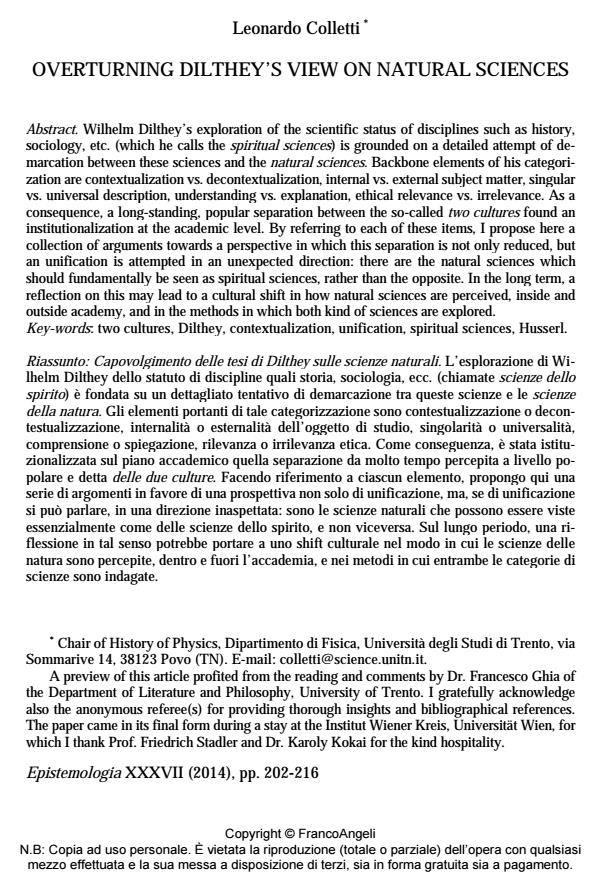Overturning Dilthey’s view on natural sciences
Journal title EPISTEMOLOGIA
Author/s Leonardo Colletti
Publishing Year 2015 Issue 2014/2
Language English Pages 15 P. 202-216 File size 65 KB
DOI 10.3280/EPIS2014-002002
DOI is like a bar code for intellectual property: to have more infomation
click here
Below, you can see the article first page
If you want to buy this article in PDF format, you can do it, following the instructions to buy download credits

FrancoAngeli is member of Publishers International Linking Association, Inc (PILA), a not-for-profit association which run the CrossRef service enabling links to and from online scholarly content.
Wilhelm Dilthey’s exploration of the scientific status of disciplines such as history, sociology, etc. (which he calls the spiritual sciences) is grounded on a detailed attempt of demarcation between these sciences and the natural sciences. Backbone elements of his categorization are contextualization vs. decontextualization, internal vs. external subject matter, singular vs. universal description, understanding vs. explanation, ethical relevance vs. irrelevance. As a consequence, a long-standing, popular separation between the so-called two cultures found an institutionalization at the academic level. By referring to each of these items, I propose here a collection of arguments towards a perspective in which this separation is not only reduced, but an unification is attempted in an unexpected direction: there are the natural sciences which should fundamentally be seen as spiritual sciences, rather than the opposite. In the long term, a reflection on this may lead to a cultural shift in how natural sciences are perceived, inside and outside academy, and in the methods in which both kind of sciences are explored.
Keywords: Two cultures, Dilthey, contextualization, unification, spiritual sciences, Husserl.
Leonardo Colletti, Overturning Dilthey’s view on natural sciences in "EPISTEMOLOGIA" 2/2014, pp 202-216, DOI: 10.3280/EPIS2014-002002